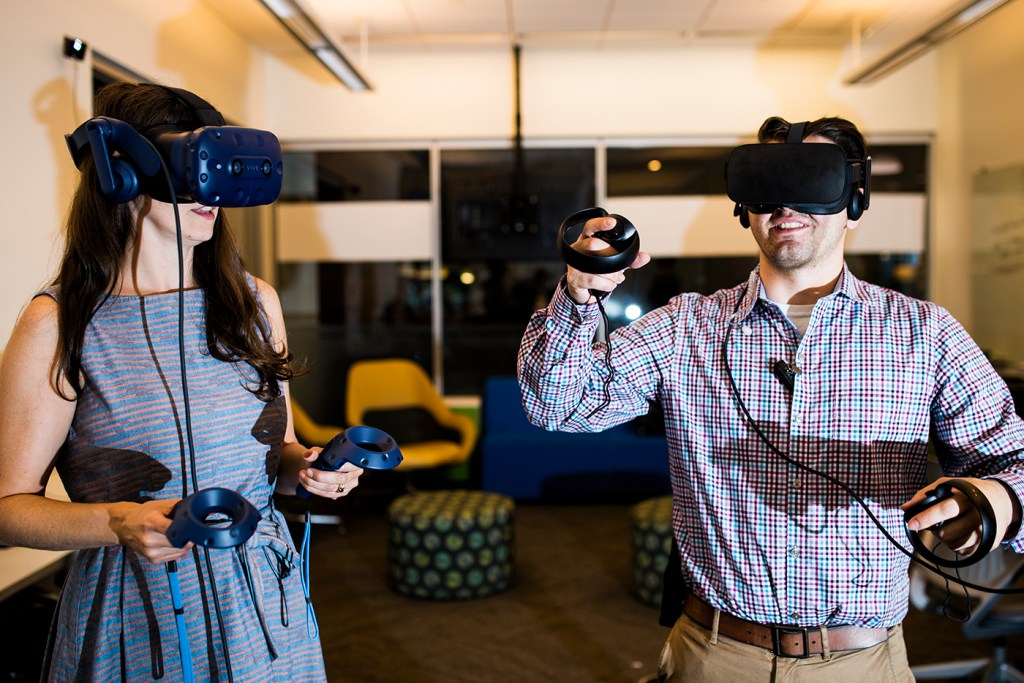How to space-travel from the comfort of your own library

I’m floating. My stomach flips. Within the tight quarters of the International Space Station, everything is so close. I spot a pair of scissors and reach for it.
Nothing.
I look down, and my shoes peek out from below my goggles. Right. Gravity. Pressing my feet into the carpet.
That carpet is in the Discovery Lab in Snell Library, which, as of Wednesday morning, is a pop-up space dedicated to augmented and virtual reality, as well as 360-degree imaging.
Next to my firmly planted feet stands Lindsey Sudbury, an academic instructional technologist within Academic Technology Services at Northeastern, who is helping to oversee the lab.
Before she started working in technology assistance, Sudbury didn’t know everything about virtual and augmented reality. Now, she has made it her goal to “meet people where they are, wherever they are,” and help them understand it.

A detailed view of an Oculus Rift VR headset in a new pop-up lab space space in Snell Library where faculty and staff can test out augmented reality, virtual reality, and 360 video equipment on Sept. 17, 2018. Photo by Adam Glanzman/Northeastern University
And however far along they are in their understanding, the Discovery Lab schedule can accommodate them. In the morning, curious novices are encouraged to test out the tech. Afternoons are set aside for people with their own digital projects underway or who need specialized equipment to complete certain assignments.
Without this pop-up lab, said Sudbury, “there are some students—many students—who would have no other option.”
High-quality 360-degree video, for example, requires a computer with high processing power and a separate graphics card to shoulder some of the computing. And fully experiencing that video requires a virtual reality headset, which few students have.
The College of Arts, Media and Design does have its own virtual reality lab, but the university-wide demand would easily overwhelm a facility originally intended only for the students and professors of one college. Information Technology Services, which houses Academic Technology Services, received guidance and support for building its own lab from the College of Arts, Media and Design. “We’re hoping to do what they’re doing,” said Sudbury, “and serve the broader community.”
Interested students and faculty are invited to attend an open house on Wednesday, Oct. 3, but a whole virtual world already awaits them.
“It’s an experiment,” said Sudbury; the possible uses have no limit.
And she and her colleagues can rest easy knowing they’ve already completed the first step: “make the space for amazing things to happen.”




